Andrew Pontzen
Explaining dark matter halo density profiles with neural networks
May 04, 2023



Abstract:We use explainable neural networks to connect the evolutionary history of dark matter halos with their density profiles. The network captures independent factors of variation in the density profiles within a low-dimensional representation, which we physically interpret using mutual information. Without any prior knowledge of the halos' evolution, the network recovers the known relation between the early time assembly and the inner profile, and discovers that the profile beyond the virial radius is described by a single parameter capturing the most recent mass accretion rate. The results illustrate the potential for machine-assisted scientific discovery in complicated astrophysical datasets.
A robust estimator of mutual information for deep learning interpretability
Oct 31, 2022Abstract:We develop the use of mutual information (MI), a well-established metric in information theory, to interpret the inner workings of deep learning models. To accurately estimate MI from a finite number of samples, we present GMM-MI (pronounced $``$Jimmie$"$), an algorithm based on Gaussian mixture models that can be applied to both discrete and continuous settings. GMM-MI is computationally efficient, robust to the choice of hyperparameters and provides the uncertainty on the MI estimate due to the finite sample size. We extensively validate GMM-MI on toy data for which the ground truth MI is known, comparing its performance against established mutual information estimators. We then demonstrate the use of our MI estimator in the context of representation learning, working with synthetic data and physical datasets describing highly non-linear processes. We train deep learning models to encode high-dimensional data within a meaningful compressed (latent) representation, and use GMM-MI to quantify both the level of disentanglement between the latent variables, and their association with relevant physical quantities, thus unlocking the interpretability of the latent representation. We make GMM-MI publicly available.
Discovering the building blocks of dark matter halo density profiles with neural networks
Mar 16, 2022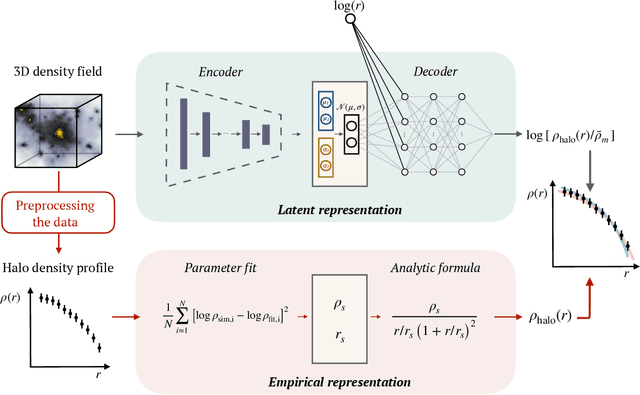
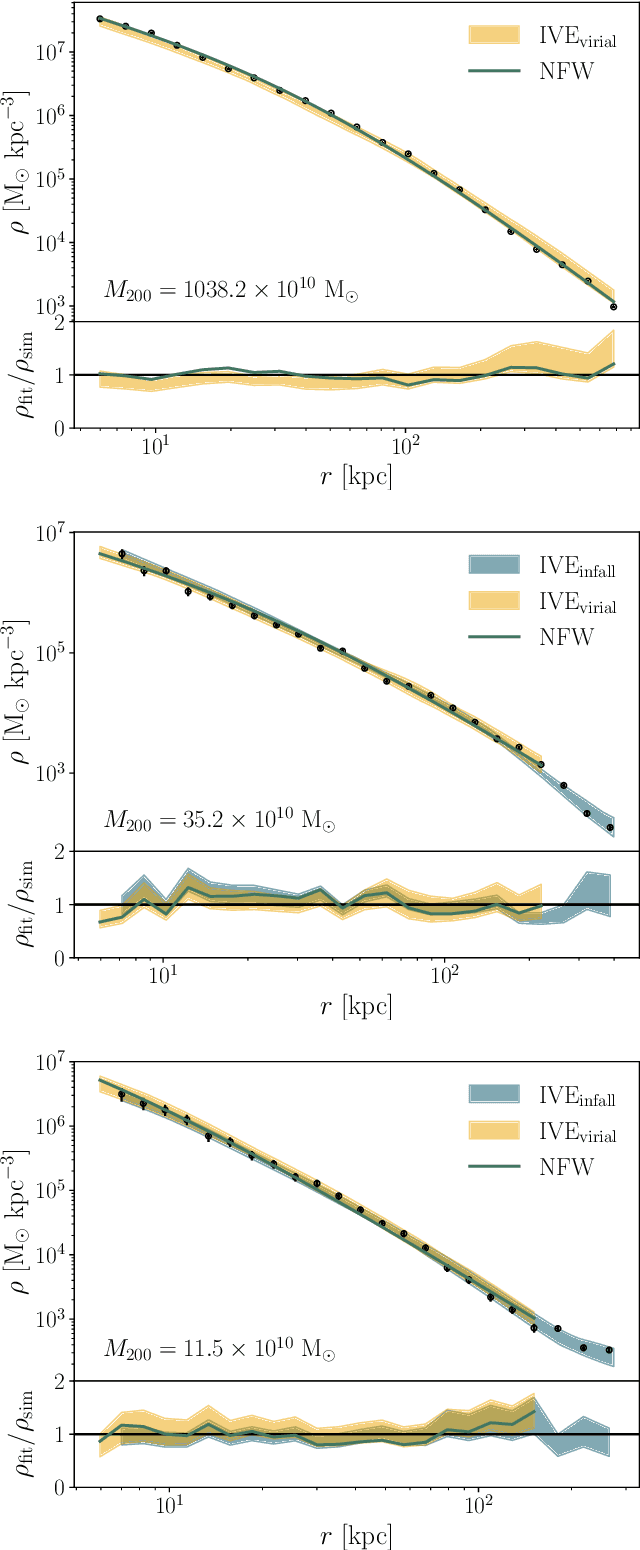
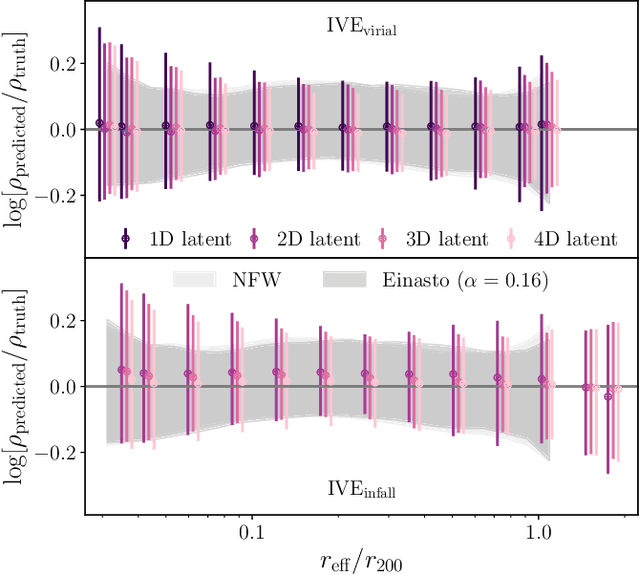
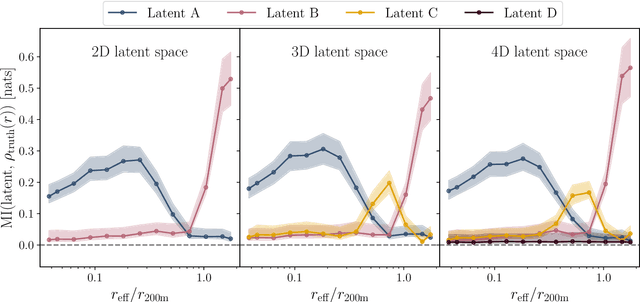
Abstract:The density profiles of dark matter halos are typically modeled using empirical formulae fitted to the density profiles of relaxed halo populations. We present a neural network model that is trained to learn the mapping from the raw density field containing each halo to the dark matter density profile. We show that the model recovers the widely-used Navarro-Frenk-White (NFW) profile out to the virial radius, and can additionally describe the variability in the outer profile of the halos. The neural network architecture consists of a supervised encoder-decoder framework, which first compresses the density inputs into a low-dimensional latent representation, and then outputs $\rho(r)$ for any desired value of radius $r$. The latent representation contains all the information used by the model to predict the density profiles. This allows us to interpret the latent representation by quantifying the mutual information between the representation and the halos' ground-truth density profiles. A two-dimensional representation is sufficient to accurately model the density profiles up to the virial radius; however, a three-dimensional representation is required to describe the outer profiles beyond the virial radius. The additional dimension in the representation contains information about the infalling material in the outer profiles of dark matter halos, thus discovering the splashback boundary of halos without prior knowledge of the halos' dynamical history.
Deep learning insights into cosmological structure formation
Nov 20, 2020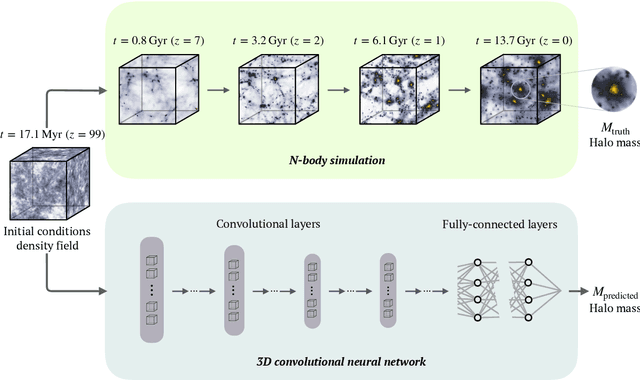
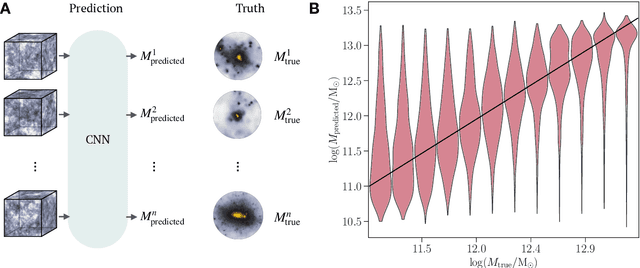
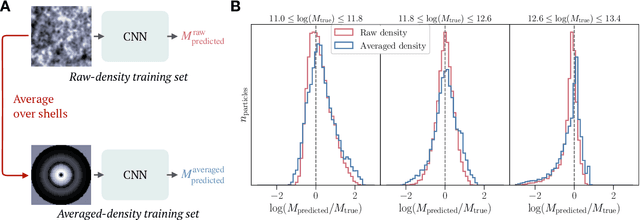
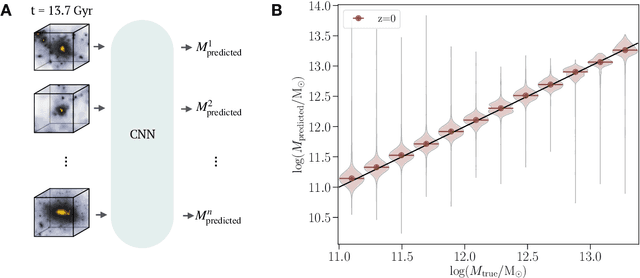
Abstract:While the evolution of linear initial conditions present in the early universe into extended halos of dark matter at late times can be computed using cosmological simulations, a theoretical understanding of this complex process remains elusive. Here, we build a deep learning framework to learn this non-linear relationship, and develop techniques to physically interpret the learnt mapping. A three-dimensional convolutional neural network (CNN) is trained to predict the mass of dark matter halos from the initial conditions. We find no change in the predictive accuracy of the model if we retrain the model removing anisotropic information from the inputs. This suggests that the features learnt by the CNN are equivalent to spherical averages over the initial conditions. Our results indicate that interpretable deep learning frameworks can provide a powerful tool for extracting insight into cosmological structure formation.
 Add to Chrome
Add to Chrome Add to Firefox
Add to Firefox Add to Edge
Add to Edge